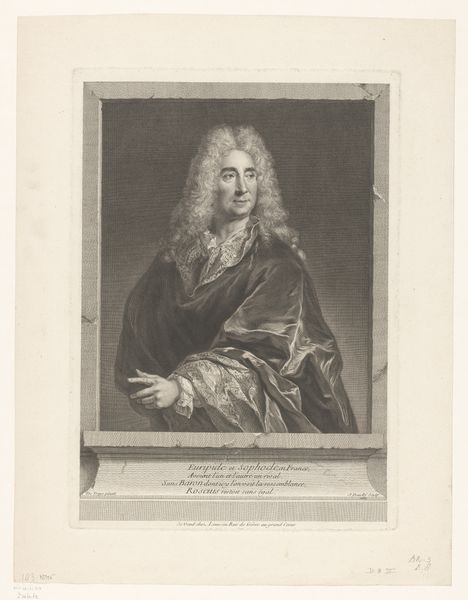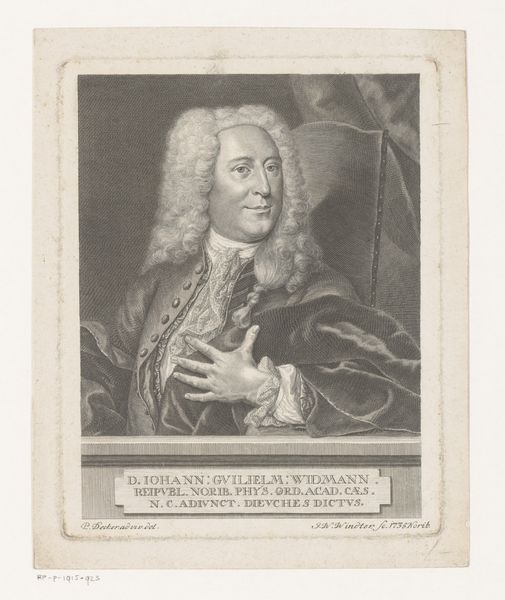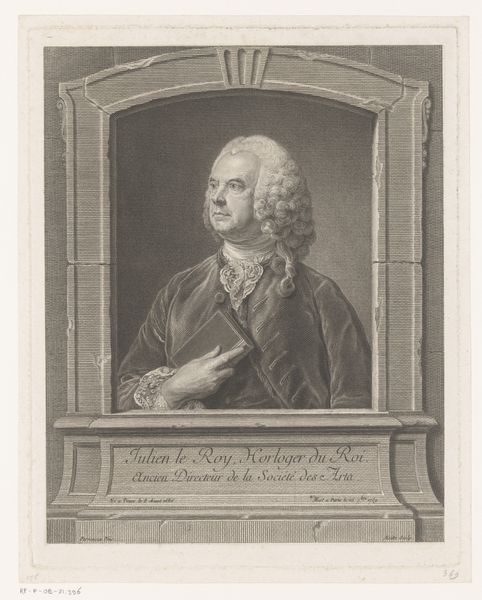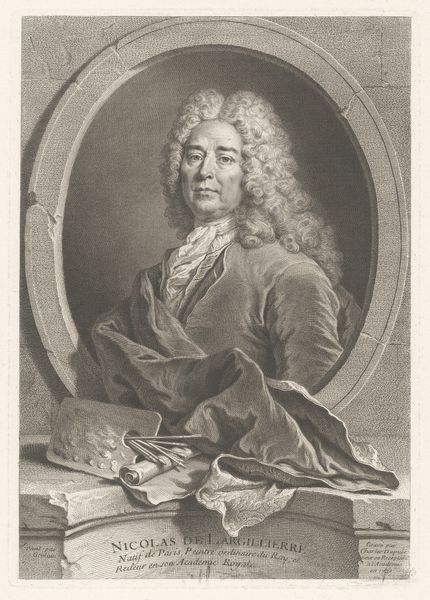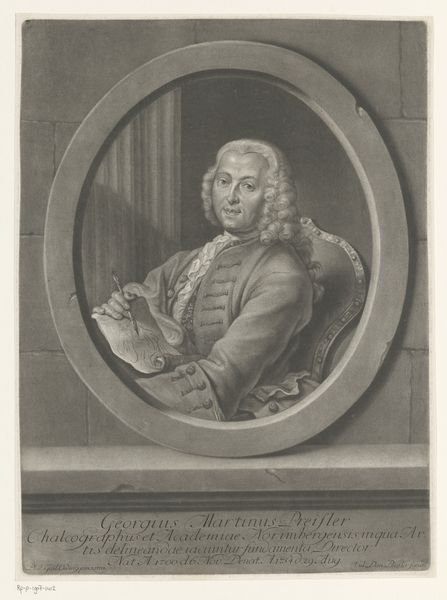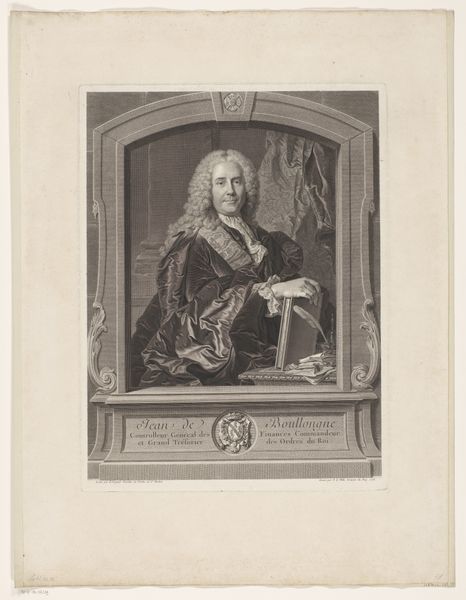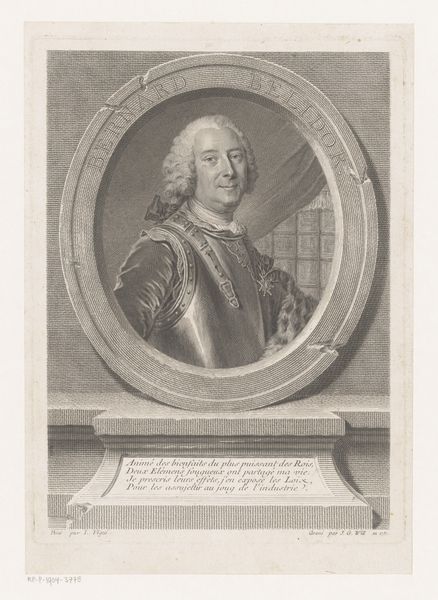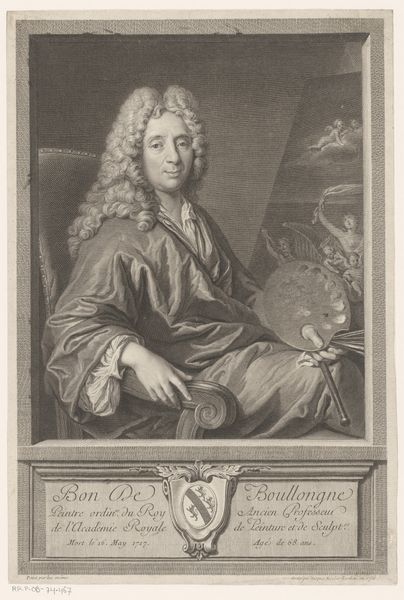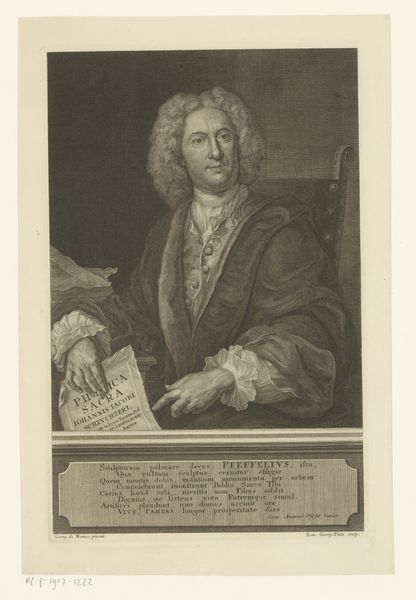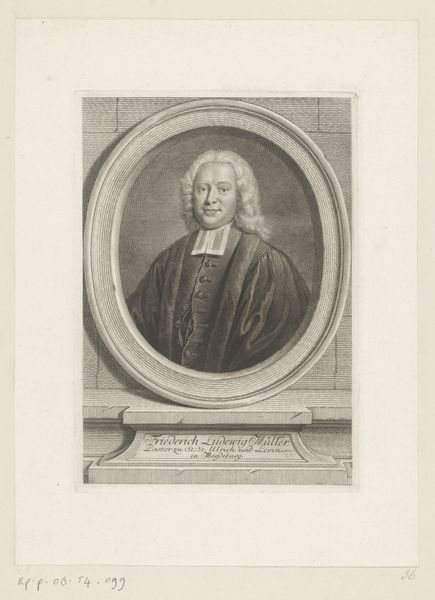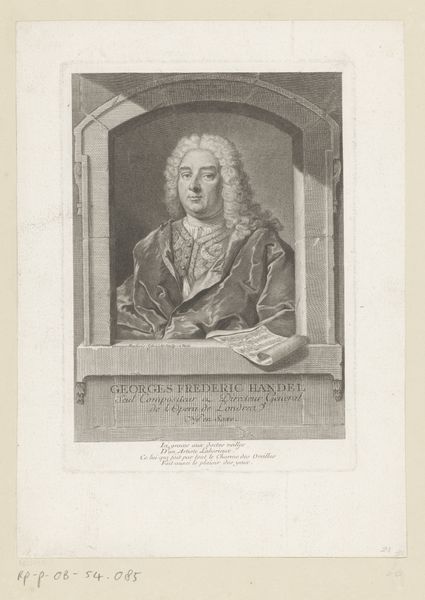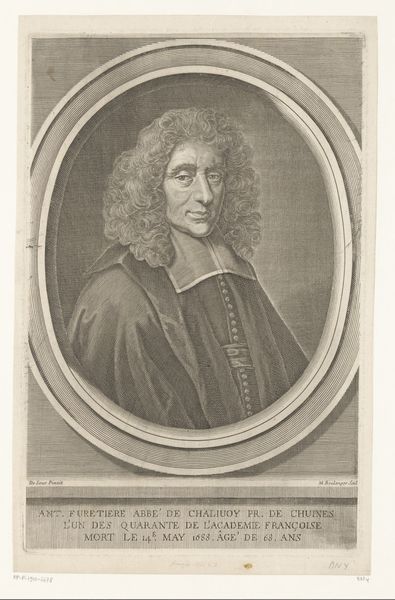
engraving
#
portrait
#
baroque
#
15_18th-century
#
engraving
Dimensions: height 485 mm, width 357 mm
Copyright: Rijks Museum: Open Domain
This is Jean-Joseph Balechou's portrait of Jean de Jullienne, made with engraving techniques sometime in the 1700s. Look closely, and you'll see how Balechou used the burin to incise lines into a copper plate, then applied ink to create this print. This process demanded incredible control and precision, a real mastery of the hand. The fine lines create delicate gradations of light and shadow, and capture the textures of fabric and skin. But there's something else to consider here: the role of printmaking in society. Prints like these democratized art, making images accessible to a wider audience beyond the wealthy elite who commissioned paintings. The engraver was a skilled artisan, playing a crucial role in disseminating knowledge and culture. It was a labor-intensive process, but one that ultimately helped shape public taste and opinion. So, next time you look at a print, remember the handwork involved. It’s a reminder that art is not just about individual genius, but about the skills and labor that underpin its creation and circulation.
Comments
No comments
Be the first to comment and join the conversation on the ultimate creative platform.
